Fools Funnel / Summer / Autumn / Winter / Toxic
Enter with utmost caution into the perilous domain of the Fools Funnel (Clitocybe rivulosa), a mushroom that disguises its true danger beneath an innocent facade.
Join us as we uncover the treacherous nature of this toxic fungus. With its pale cap and delicate gills, the Fools Funnel can easily deceive the untrained eye.
Learn to identify its distinctive features, explore its preferred habitats, and gain an understanding of the harmful toxins it contains. Consumption of the Fools Funnel can lead to severe gastrointestinal distress and other adverse health effects. Knowledge and awareness are essential in avoiding the risks associated with this mushroom. Let this serve as a reminder of the importance of accurate identification, responsible foraging practices, and the preservation of one’s well-being. Respect the perils that nature presents and navigate the world of mushrooms with informed caution. Stay vigilant, for beneath the innocent allure of the Fools Funnel lies a toxic peril waiting to be unmasked.
Scientific Name
Clitocybe Rivulosa
Common Names
Fools funnel, False Champignon, The Sweating Mushroom.
Family
Tricholomataceae
Habitat
In grass, they are saprotrophic with the root systems of grasses.
Description
A seriously toxic mushroom that all foragers should be familiar with. The very closely related Ivory Funnel (Clitocybe Dealbata) which may in fact be the same species is very difficult to distinguish, we will therefore consider them one and the same. Rivulosa tends to be found in coastal areas and Dealbata tends to be found further inland. Together they are fairly common and they tend to form ’fairy rings’ both are potentially deadly.
Identifying Features:
Cap:
Convex when young they tend to flatten out with age or become funnel shaped. They are almost pure white when young becoming greyer with maturity. When mature they normally have an in rolled edge.
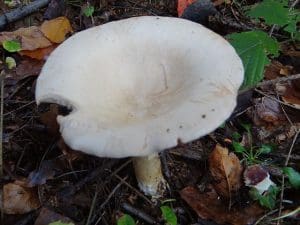
Stem:
Similar in colour to the cap, becoming grey with age. Smooth and fibrous, slightly downy near the base.
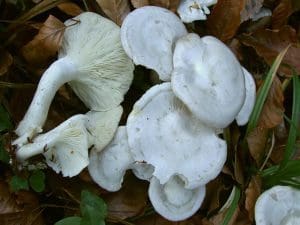
Gills:
White when young they become grey with age sometimes with a pinkish tinge. They are adnate or decurrent.
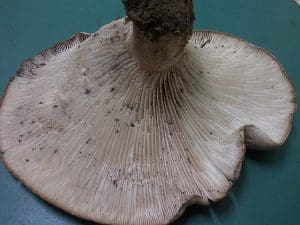
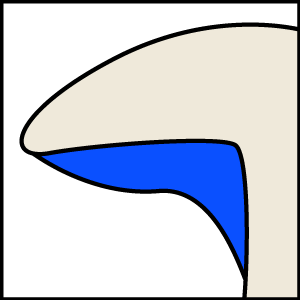

Smell:
No real aroma.
Spores:
White.
Known hazards
Potentially deadly poisonous! They contain lethal amounts of muscarine, symptoms include excessive salivation, sweating, abdominal pains, sickness and diarrhoea, together with blurred vision and laboured breathing. Death is rare in healthy adults but children or those with respiratory or heart conditions would be more at risk.
Potential lookalikes
There are quite a few potential lookalikes to this mushroom so great care should be taken when picking any white gilled mushrooms growing in grass.
The St. Georges mushroom (Calocybe Gambosa) does look similar but appears earlier in the year. (Around St. George’s day, 23rd April) and it smells strongly of damp flour and has much thicker flesh.
The Fairy Ring Champignon (Marasmius Oreades) looks very similar and also forms fairy rings in the grass at around the same time of year. The key difference is that the gills of the Fairy Ring Champignon is free from the stem, whereas the gills of the Fools Funnel run slightly down the stem.
Extra Notes
This species is considered to be one of the most toxic mushrooms in the UK and instances of poisonings are fairly common as it’s fairly common and grows where people expect to find edible mushrooms.



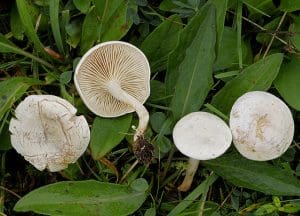



Leave a Reply
You must be logged in to post a comment.